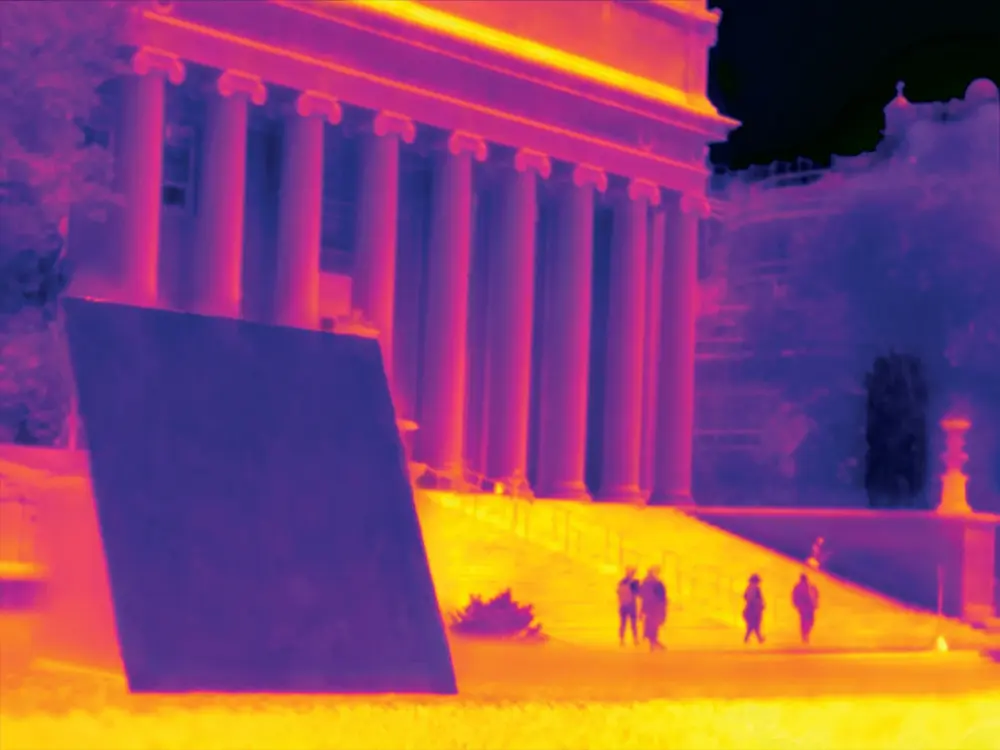SkyCool To Reduce the Need for Electric-Powered Air Conditioning
SkyCool Systems is a company started by professors at renowned universities, who have developed a new technology to reduce the need for electric-powered air conditioning to offer green solutions.
The company has installed a multi-layered but thin film of hafnium dioxide, silica and other materials deposited, which gets colder under direct sunlight and stays about 5 degrees Celsius cooler than the surrounding air, that too without electricity at Columbia University. Films like this could reduce the need for traditional methods of air conditioning.
Climate change leads to global warming which has now become one of the major reasons for causing immediate and direct attention to the planet’s health. With the ever-growing extreme heat conditions, the use of air conditioning is also maximizing. The use of air conditioners increases the consumption of electricity, which is ultimately harmful to the environment.
In the coming twenty years, the electricity needed to power the world’s air conditioners is expected to triple. Fossil fuels are burned to run these air conditioners and they add about 117 metric tons of carbon dioxide to the atmosphere each year in the US alone.
June was the hottest month ever recorded in North America, as an unmatched heatwave claimed 200 lives in Oregon and Washington.

Image: Jyotirmoy Mandal
The technologies that keep us cool are one of the major factors contributing to global warming. In order to replace air conditioners with a better alternative, Aaswath Raman, a professor of engineering at the University of California Los Angeles, has created a new technology that would help people to cool down without using electricity.
He teamed up with his mentor Shanhui Fan at Stanford and they constructed a thin, multi-layered film that would take advantage of the way earth’s atmosphere allows heat to escape into space.
According to the second law of thermodynamics, anything that has been warmed by some heat source eventually cools down when the heat source is removed. The same phenomenon is used to explain why dew forms on blades of grass at night.
The film is both highly reflective and an excellent emitter. It reflects visible light so it wouldn’t warm up by the sun and re-emits infrared light at the right wavelengths to pass through the atmosphere, unblocked. It can be made over large areas using the same manufacturing techniques that are used to coat windows.
Rooftops can get exceedingly hot in the summer, reaching temperatures as high as 140°F. As a spot check, the inventors tried a simple test – they shaded the film to find that the film became warm because the infrared radiation was no longer escaping into the atmosphere.
It was hitting the shading material and warming it, which in turn heated the air around the film. When the film was placed back in the sunlight it became noticeably cool to the touch, about 10° below the air temperature.
Also Read: MIT’s Innovative Method to Reuse Water in Power Plants
Raman, Fan, and their Stanford colleague Eli Goldstein then cofounded a company called SkyCool. In the spring of 2020, SkyCool installed film-coated panels on the roof of a California supermarket. Water flowing through the panels is cooled by the film and then pumped into the building’s conventional air conditioners and refrigerators, cooling their components and lowering the amount of electricity used to power them.
The further development of this project on a larger scale is in progress. For now, this technology is a viable and eco-friendly alternative to air conditioners.
Via: National Geographic


